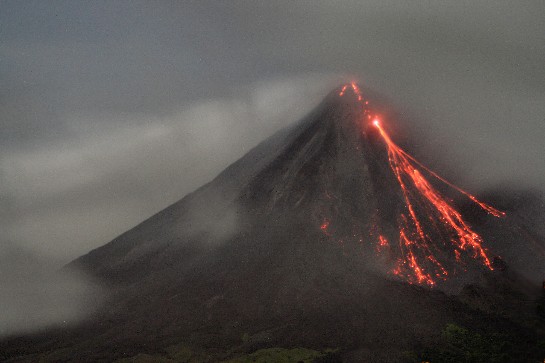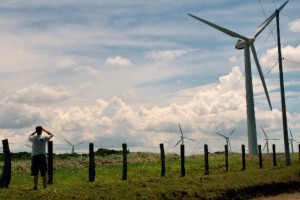 Arenal Volcano, Costa Rica. Image Credit: Flickr
Arenal Volcano, Costa Rica. Image Credit: Flickr
Costa Rica: A Preview of Fossil Fuel Independence
For the first 75 days of 2015, Costa Rica was running on 100% renewable energy. This statement from the Ministry of the Environment and the Costa Rican Electricity Institute (ICE) comes several years after a previous pledge for the country to be carbon neutral by 2021. While environmentalists and other proponents of sustainability are clamoring for other countries-like the US-to follow suit, relying on solely renewable energy sources is not as easy as one may think. In fact, it opens up an entirely new discussion on the issue of energy security.
Although the feat is impressive, there are a number of factors specific to Costa Rica that permit reliance on 100% renewable energy. The majority of this energy comes from hydropower, which has been aided substantially by uncharacteristically heavy rainfall over the past year. A smaller portion of this energy comes from geothermal sources, as Costa Rica is littered with volcanoes. Indeed, the government recently pledged nearly $1 billion for a geothermal project consisting of four new plants. Efforts are also being made to increase dependence on solar and wind energy sources as well.
While Costa Rica has accomplished an impressive feat, joining Albania, Paraguay, and Iceland as the only other country to rely solely on renewable energy, critics say the Latin American nation will likely not be able to sustain this ratio. Hydropower currently accounts for 68% of Costa Rican energy. While heavy rains have aided this source and enabled the government to reduce electricity costs, reliance on this type of energy creates vulnerabilities to severe weather events like droughts. Less than a year ago, Costa Rica experienced the worst drought in 50 years. These vulnerabilities highlight a common theme of energy security-heavy reliance on a single source of energy. Sofia Blanco, Executive Director of Acesolar, uses drought as an example:
“Drought is synonymous with crisis in many areas, not just energy,” she says. “That’s why we promote the diversification of the energy matrix.”
The energy achievements of Costa Rica can serve multiple purposes: it can be used as a blueprint for other countries with similar geographic features, it can serve as a cautionary tale for effects of climate change via severe droughts and uncharacteristic rainfall, and it can prompt larger, more industrialized countries to invest in renewable energy technology at home and abroad. While larger energy consuming countries like the US may not be ready for 100% renewables, they can take proactive steps with the assets they do have. Investment in R&D for new energy technologies and investments in other countries and regions of the world is a good place to start.
One promising region of the world in terms of investment in new energy technologies is the Caribbean. ASP has written extensively on this issue, and held a conference last month, along with a full report.
Being entirely carbon free may be an unrealistic goal for many countries at this point, but investing in new and emerging technologies will, at the very least, aid in reducing emissions and diversifying energy supplies.






